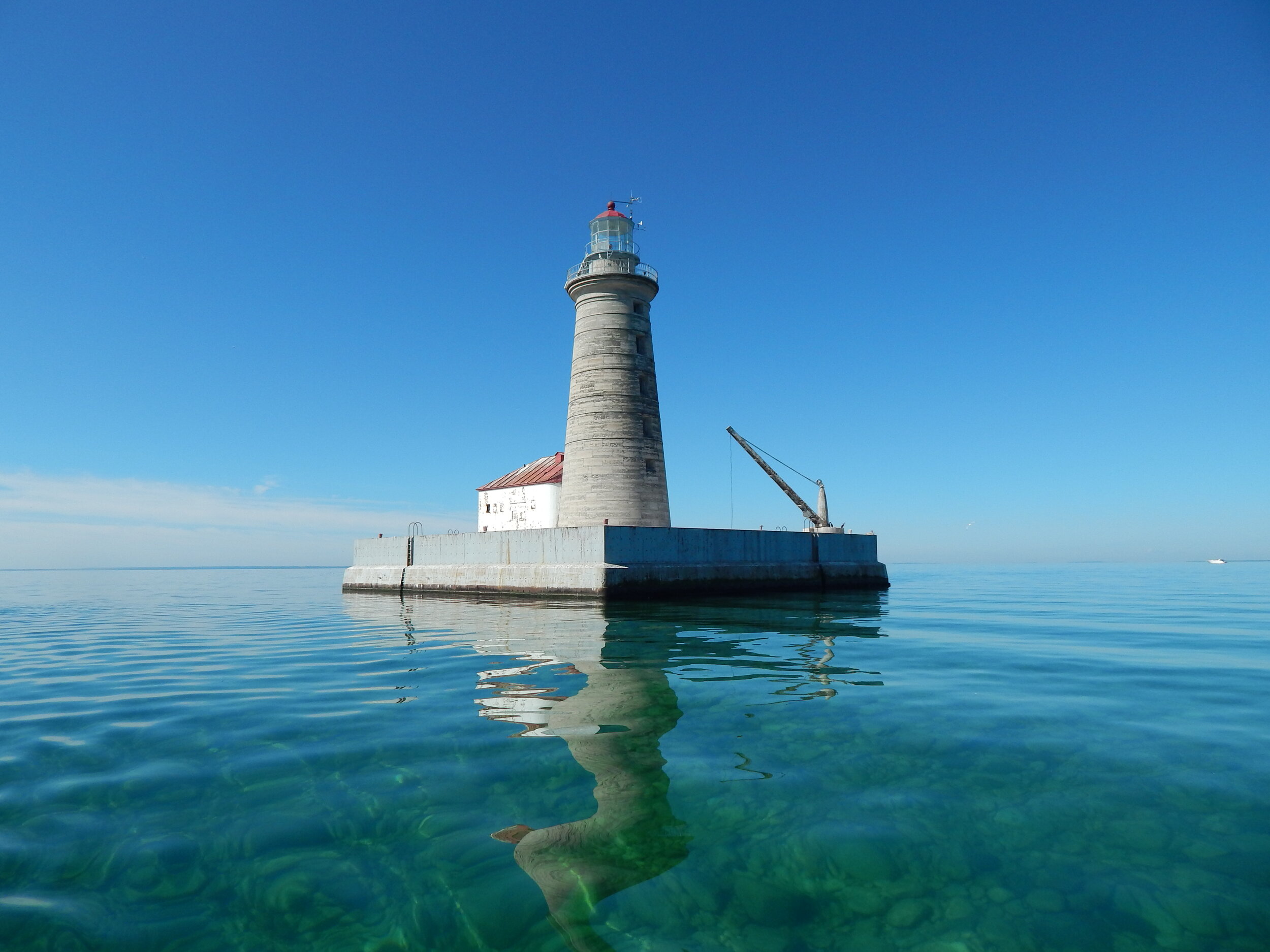
The History
Spectacle Reef Light stands vigil in northern Lake Huron about 18 miles east of Cheboygan, Michigan and 12 miles off Nine Mile Point, marking one of the most treacherous stretches of the Straits of Mackinac. An engineering feat, construction started on the spectacle shaped reef (hence the name) in 1870 and was completed four years later with the Light entering service in June of 1874. It is the most expensive lighthouse ever built on the Great Lakes, costing $415,000 in 1874 ($9.3 million today) and is made of interlocking, hand cut limestone blocks with a height of 97 feet above the water and was equipped with a second order Fresnel lens with a range of up to 24 miles. The Light also includes an attached fog building that was built in 1906 to house two steam whistles, later changed to two diaphone foghorns, and the machinery for the operation of the station with additional storage below. The entire structure rests on a massive 86’ by 86’ steel encased concrete deck. The tower contains seven floors: five for living space, the pedestal room, and the lantern room. There are also two below ground storage rooms outside the main structure accessible through hatches in the deck. The lighthouse was automated in 1972 after almost 100 years of being a manned station, and the lens was removed in 1984 and is now on display at the National Museum of the Great Lakes in Toledo, Ohio. The current light is a modern LED visible for 12 miles.
The Future
The goal of the Spectacle Reef Preservation Society is to restore the Light and open it to the public as a “Learning Light” and museum where people can discover not only the history of this unique structure but also the service and sacrifice of those who manned it to keep others safe. The restoration will be a multi-year project with the plan of being operational in time to celebrate Spectacle Reef’s 150th anniversary in 2024.
Phase 1 (Start of the 2021 Season)
Begin cleanup work and establish facilities to allow overnight stays for volunteers
Scrape and prep interior walls for paint and properly dispose of removed material
Start the repair/replacement of windows in tower and fog building
Install temporary crane to lift heavy items onto the deck
Ensure buildings are water tight
Phase 2
Install permanent 2+ ton crane on southeast corner of deck
Install bathroom with proper waste containment and disposal in fog building
Paint interior using colors discovered during the renovation
Install fully functional kitchen
Furnish bunk rooms in tower
Phase 3
Create and establish a museum facility within the fog signal building.
Network within communities across the region to educate the public, school groups, and youth organizations about the importance of this Light and lighthouses in general and their contributions to the economic and social development of the Great Lakes region.
Establish full time keeper programs on site during the operating season to educate visitors and continue restoration and maintenance projects.